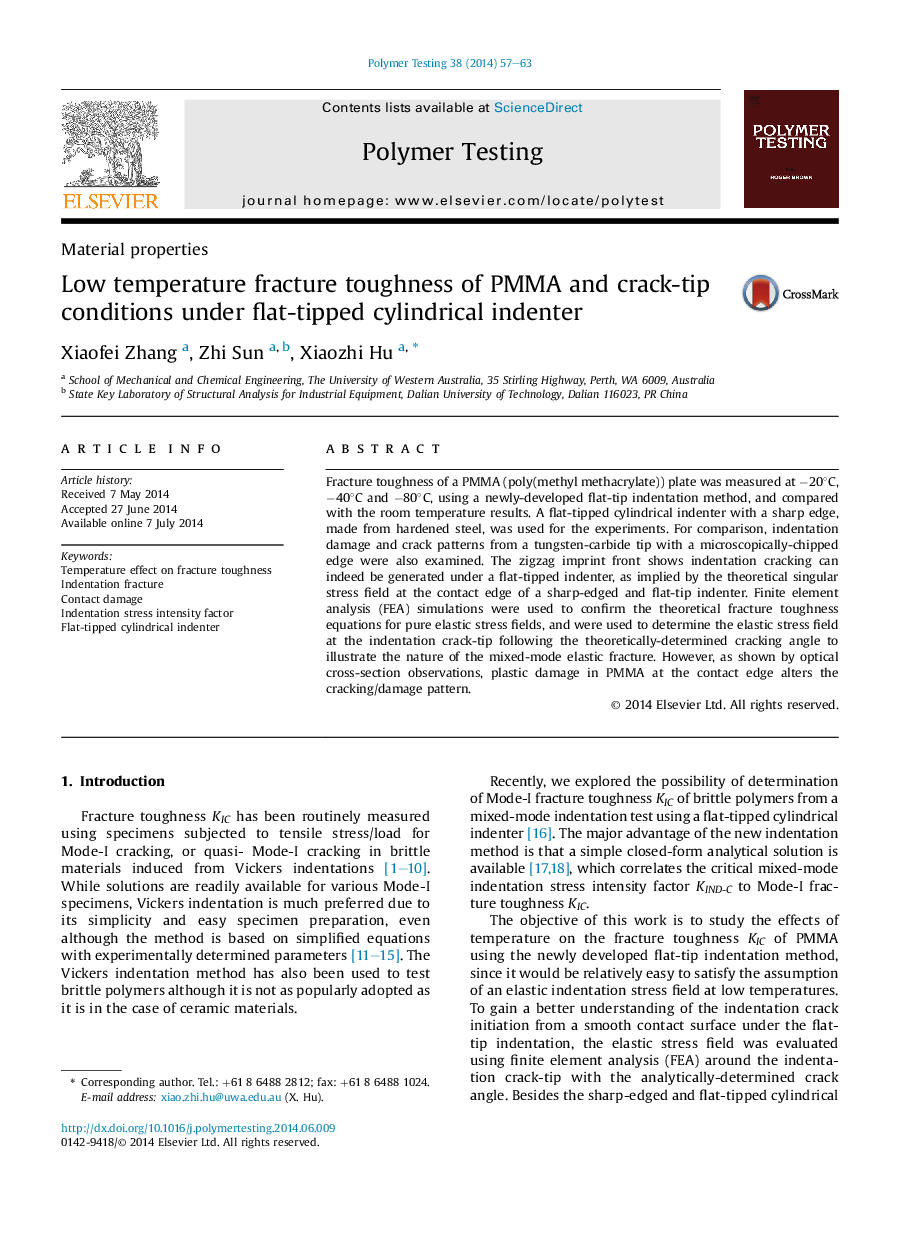| Article ID | Journal | Published Year | Pages | File Type |
|---|---|---|---|---|
| 5206317 | Polymer Testing | 2014 | 7 Pages |
Fracture toughness of a PMMA (poly(methyl methacrylate)) plate was measured at â20°C, â40°C and â80°C, using a newly-developed flat-tip indentation method, and compared with the room temperature results. A flat-tipped cylindrical indenter with a sharp edge, made from hardened steel, was used for the experiments. For comparison, indentation damage and crack patterns from a tungsten-carbide tip with a microscopically-chipped edge were also examined. The zigzag imprint front shows indentation cracking can indeed be generated under a flat-tipped indenter, as implied by the theoretical singular stress field at the contact edge of a sharp-edged and flat-tip indenter. Finite element analysis (FEA) simulations were used to confirm the theoretical fracture toughness equations for pure elastic stress fields, and were used to determine the elastic stress field at the indentation crack-tip following the theoretically-determined cracking angle to illustrate the nature of the mixed-mode elastic fracture. However, as shown by optical cross-section observations, plastic damage in PMMA at the contact edge alters the cracking/damage pattern.
